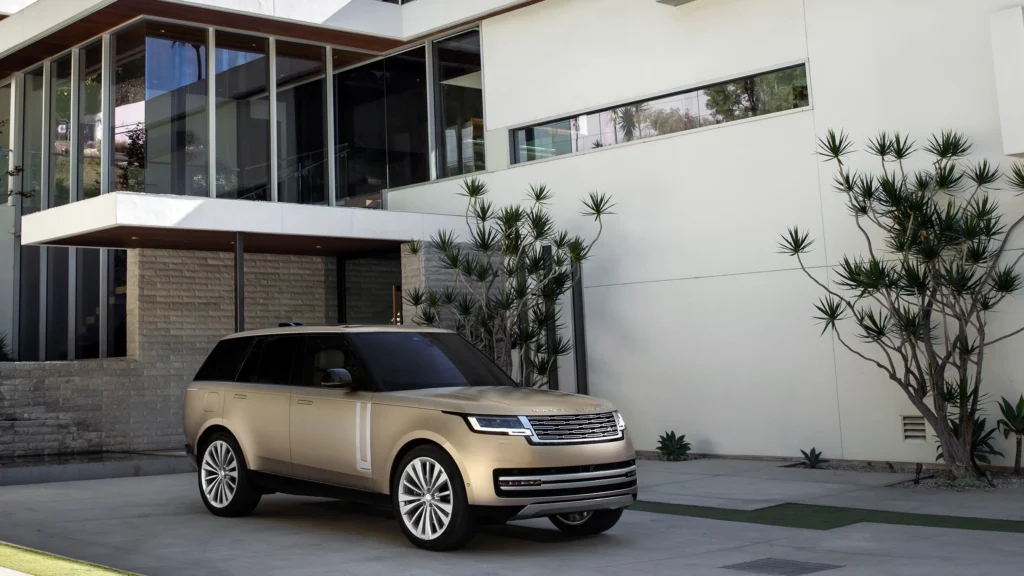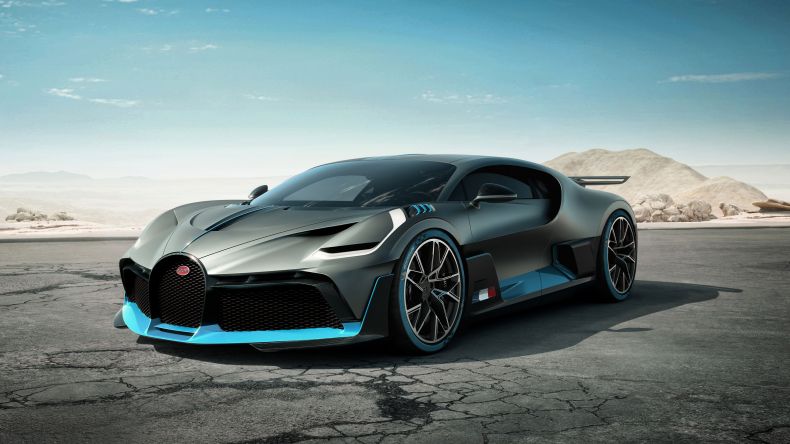In the world of automobiles, luxury cars hold a certain mystique. Sleek, powerful, and wrapped in prestige, owning a luxury car is often seen as a statement — a marker of success and style. But beneath the polished exterior and the brand name badge lies a complex web of factors that contribute to their steep price tags. From advanced engineering to brand perception, there’s far more to a luxury car’s cost than meets the eye.
In this deep-dive, we’ll unravel what truly makes a luxury car expensive. We’ll go beyond the surface and explore manufacturing processes, materials, marketing, after-sales services, and more to understand the complete picture. Whether you’re an enthusiast, a potential buyer, or simply curious, this guide will help you grasp the nuances behind the pricing of high-end vehicles.
What Defines a Luxury Car?
Before we analyze the costs, it’s important to define what makes a vehicle a “luxury car.” It’s not just about a high price or an exotic badge. A luxury car typically offers a superior driving experience, advanced technology, high-end materials, and extensive comfort features.
These vehicles are often associated with brands like Mercedes-Benz, BMW, Audi, Lexus, and Tesla — but other brands such as Genesis, Volvo, and even upper trims of mainstream brands are entering the luxury space too.
Luxury cars come in various forms: sedans, SUVs, coupes, convertibles, and now electric vehicles. Each caters to a specific segment of buyers, and the competition in this market has pushed manufacturers to innovate relentlessly, further driving up costs.
Precision Engineering and Performance Standards
At the heart of a luxury car is precision engineering. Unlike mass-market vehicles that focus on efficiency and affordability, luxury cars are built with performance and refinement in mind.
- Powertrain Development: Luxury car manufacturers often design and engineer proprietary engines that deliver higher horsepower, torque, and smoothness. Whether it’s the V8s in German sports sedans or the dual-motor setups in electric models like the Porsche Taycan, developing these components is costly and time-consuming.
- Suspension and Ride Quality: Adaptive suspension systems, air suspension, and precision tuning ensure a smooth ride regardless of road conditions. These advanced setups require more complex engineering and better-quality parts.
- Driving Dynamics: Luxury cars are tested on tracks and in wind tunnels to fine-tune steering responsiveness, braking feel, and cornering abilities. Achieving the perfect balance between comfort and agility involves high R&D costs.
- Transmission Technology: Many luxury brands use dual-clutch, 8-speed, or 10-speed automatic transmissions developed in-house or through specialized engineering firms — contributing significantly to the final vehicle cost.
The Cost of Premium Materials

One of the most noticeable differences in a luxury car is the material quality. From the dashboard to the seats, luxury cars surround occupants with high-end finishes, and each of these choices comes at a cost.
- Genuine Leather and Suede: Top-tier hides are sourced, treated, and hand-stitched into interiors. Alcantara, Nappa leather, and other premium fabrics cost several times more than standard synthetic materials.
- Wood and Metal Trim: Real wood veneer, brushed aluminum, and carbon fiber trim provide a tactile and visual upgrade, but require meticulous processing.
- Soundproofing Materials: Luxury cars are expected to be whisper-quiet on the road. This requires additional sound-dampening materials throughout the chassis, windows, and floor.
- Customizability: Many luxury brands offer customization down to the thread color on the seats or the type of wood inlays. These bespoke options require additional labor and inventory management, raising prices even further.
Cutting-Edge Technology and Innovation
Innovation is one of the defining traits of a luxury car. Features debut in luxury models years before trickling down to economy vehicles.
- Infotainment Systems: Large OLED screens, gesture controls, haptic feedback, and custom interfaces all demand R&D investment and costly hardware.
- Driver Assistance Features: Adaptive cruise control, lane-centering, automatic parking, and night vision cameras are just some of the tech bundled into these vehicles — powered by high-end sensors and processors.
- Lighting Systems: Matrix LED and laser headlights not only provide better visibility but also include sensors and auto-adjusting components that add to the manufacturing complexity.
- In-Cabin Experiences: Massage seats, 3D audio systems by brands like Bang & Olufsen, and ambient lighting all contribute to a luxurious experience but require specialized components and systems integration.
Safety Above and Beyond
Luxury cars must meet and often exceed safety standards. This includes physical crashworthiness as well as predictive technologies.
- Advanced Safety Frameworks: Reinforced structures, multiple crumple zones, and high-strength steel increase production costs.
- Airbag Systems: Some luxury vehicles have over 10 airbags, including knee, side, and rear-seat airbags.
- Driver Monitoring Systems: Cameras and sensors inside the cabin track driver attentiveness to prevent drowsiness or distraction — another layer of complexity and cost.
Brand Prestige and Marketing
Let’s not ignore one of the biggest cost drivers: the brand name itself. Luxury carmakers invest millions in marketing, event sponsorships, fashion tie-ins, and influencer partnerships. These efforts are not just about selling cars — they’re about selling a lifestyle.
- Heritage and Legacy: Brands like Rolls-Royce and Bentley carry a rich history, and the value of that legacy is baked into the price tag.
- Exclusivity: Limited production runs or restricted availability of certain models enhance demand and perceived value.
- Global Brand Building: High-profile launches, celebrity endorsements, and luxury auto shows cost big money, all of which adds to the vehicle’s final price.
After-Sales Service and Ownership Experience
The luxury experience doesn’t stop after the sale — in fact, it’s just beginning. These manufacturers provide white-glove services that also inflate operational costs.
- Concierge Services: Pickup and drop-off for servicing, mobile technicians, and personal customer service representatives are common in the luxury market.
- Extended Warranties and Maintenance Plans: Many brands offer no-cost maintenance for several years, covering oil changes, brake pads, and even tires — built into the price.
- Luxury Dealership Experience: From espresso bars to VR car configuration rooms, luxury car showrooms are premium destinations requiring heavy investment.
Global Regulations and Emission Standards
Luxury cars often push the envelope in terms of performance and innovation, which means they are under intense scrutiny for emissions and fuel efficiency.
- Hybrid and Electric Transitions: Many luxury brands are investing billions into electrification. Developing platforms for EVs, integrating battery systems, and achieving regulatory compliance is a significant cost.
- Emission Penalties: High-performance engines often struggle to meet emissions standards. Some brands pay penalties or invest in offset programs — the cost of which is passed to the buyer.
Economies of Scale — Or Lack Thereof
Mainstream automakers rely on producing millions of units to bring down costs. Luxury brands, on the other hand, often produce vehicles in much smaller quantities.
- Custom Tooling: Specialized parts require custom manufacturing lines that are underutilized compared to those making mass-market cars.
- Lower Volume Production: Producing fewer cars means fewer efficiencies and higher per-unit costs, particularly for hand-assembled or limited edition models.
The Emotional Component: Status and Aspiration
There’s a less tangible but equally powerful cost factor — human emotion. A luxury car is not just a means of transport; it’s an emotional purchase driven by status, aspiration, and identity.
- Desire and Perception: The feeling of sitting behind the wheel of a luxury car is part of what you’re paying for. The badge represents years of craftsmanship, success, and exclusivity.
- Lifestyle Integration: Luxury brands often integrate their vehicles with luxury lifestyles — sponsoring yachting events, golf tournaments, or elite art fairs — and buyers pay for access to this world.
Case Study: The Price Breakdown of a $100,000 Luxury Sedan
To truly appreciate where the money goes, let’s examine a simplified breakdown of a $100,000 luxury sedan:
- R&D and Engineering: $15,000
- Premium Materials: $10,000
- Technology and Infotainment: $8,000
- Branding and Marketing: $6,000
- Regulatory Compliance: $5,000
- Manufacturing and Labor: $20,000
- Dealer Markup and Distribution: $10,000
- After-Sales Service and Warranty: $8,000
- Profit Margin: $18,000
This illustration shows that while performance and materials are important, branding, compliance, and after-sales support also carry significant weight.
Is It Worth It? The Rational vs. Emotional Decision
Buying a luxury car isn’t just a financial decision — it’s a personal one. Some buyers prioritize craftsmanship, while others want top-tier safety and performance. Others are drawn to brand prestige. The important question to ask is: what are you really paying for?
If you’re looking for value and practicality, a well-equipped mainstream vehicle may offer 80% of the luxury experience for a lower price. But if driving pleasure, cutting-edge tech, and a premium ownership experience matter most, then the price of a luxury car may be worth every penny.
Future Trends in the Luxury Car Market
The luxury car landscape is evolving rapidly, and with it, the cost structure.
- Electrification: Luxury EVs like the Lucid Air and Mercedes EQS are leading the charge. Battery technology, range optimization, and fast charging networks are shaping future costs.
- Sustainability: Expect higher investment in sustainable materials, carbon-neutral manufacturing, and eco-friendly interiors — all of which will influence pricing.
- Autonomous Driving: Self-driving features are being pioneered in luxury segments, demanding significant investments in AI, LIDAR, and software platforms.
More Than Just a Price Tag
Luxury cars are not priced high just for show — they represent a fusion of innovation, design, emotion, and branding. The cost reflects far more than just metal and leather. It encompasses research, safety, technology, comfort, and a lifestyle that appeals to the most discerning customers.
So next time you see a luxury car cruising down the street, remember: what you see is just the tip of the iceberg. Behind that badge lies a story of design, aspiration, and a series of deliberate decisions that make the experience not just about transportation — but transformation.

